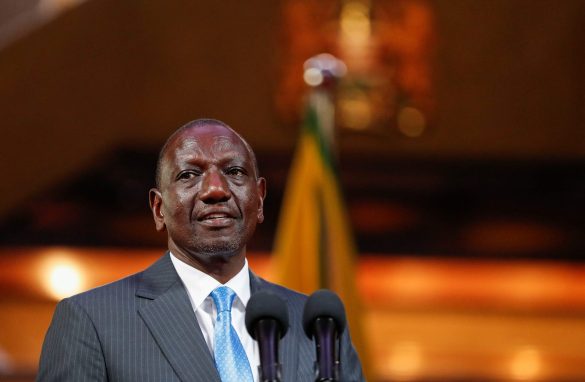Kenya’s political landscape has been rocked by an intensifying feud between President William Ruto and his former deputy, Rigathi Gachagua, with the two trading public accusations over leadership and governance. Once allies who campaigned together to secure the presidency in 2022, the pair’s fallout has become a spectacle of political intrigue and personal attacks.
The Genesis of the Rift
The animosity came to light after Rigathi Gachagua, now out of office following his impeachment in October 2024, accused Ruto of leading a government mired in corruption. Speaking on TikTok live, Gachagua alleged that Ruto had abandoned accountability and betrayed the Mt. Kenya region, which had been instrumental in his electoral victory.
In a scathing retort during a rally in Vihiga, Ruto dismissed Gachagua’s claims, labeling him as incompetent and corrupt. The president went further to suggest that these same traits had led to Gachagua’s removal from office, painting his former deputy as a divisive figure pursuing tribal politics.
“Those incompetent, tribal, selfish, and corrupt leaders have no space in this country,” Ruto declared. “We removed them because of corruption, theft, and ethnicity, and they now want to lecture us from the forest on governance.”
A War of Words
The back-and-forth escalated when Gachagua doubled down on his criticism during another TikTok session, accusing Ruto of using reverse psychology to evade scrutiny. Gachagua asserted that his impeachment was part of a broader plot by the president to suppress dissenting voices from Mt. Kenya.
“Ruto is no saint,” Gachagua declared. “He has overseen wanton corruption and failed to deliver on promises made to Kenyans. It’s hypocritical for him to call out others while his house is not in order.”
In Busia, Ruto responded to Gachagua’s latest remarks by reinforcing his stance. He claimed that Gachagua’s leadership failures disqualified him from critiquing the government.
The Mt. Kenya Factor
The feud is further complicated by its implications for the Mt. Kenya region, which played a pivotal role in Ruto’s election. Gachagua, who has long touted himself as the region’s political kingpin, warned that Mt. Kenya would not support Ruto in future elections.
“Mt. Kenya is gone,” Gachagua asserted. “Even if you appoint daughters of Mumbi to government positions, you won’t win us back.”
The region delivered 3.5 million of Ruto’s 7.1 million votes in 2022, a significant contribution to his victory over Raila Odinga. However, Gachagua’s statements suggest a shift in the political loyalty of this crucial voting bloc.
Implications for Governance
The public clash between Ruto and Gachagua has exposed cracks in Kenya’s political elite, raising concerns about the country’s governance. Critics argue that the infighting distracts from pressing issues such as economic recovery, corruption, and national unity.
Political analysts warn that the fallout could have far-reaching consequences for the 2027 elections, as both leaders vie for influence over key voter bases. For Ruto, maintaining a united government is critical to his legacy. For Gachagua, regaining political relevance hinges on positioning himself as a champion of Mt. Kenya’s grievances.
What Lies Ahead?
As the feud intensifies, Kenyans are left wondering whether this political drama will lead to meaningful change or further deepen divisions. The rift between Ruto and Gachagua serves as a reminder of the fragility of political alliances and the challenges of sustaining unity in a deeply polarized nation.
For now, all eyes remain on the two leaders as they continue their war of words, each determined to assert dominance in Kenya’s ever-evolving political arena.














